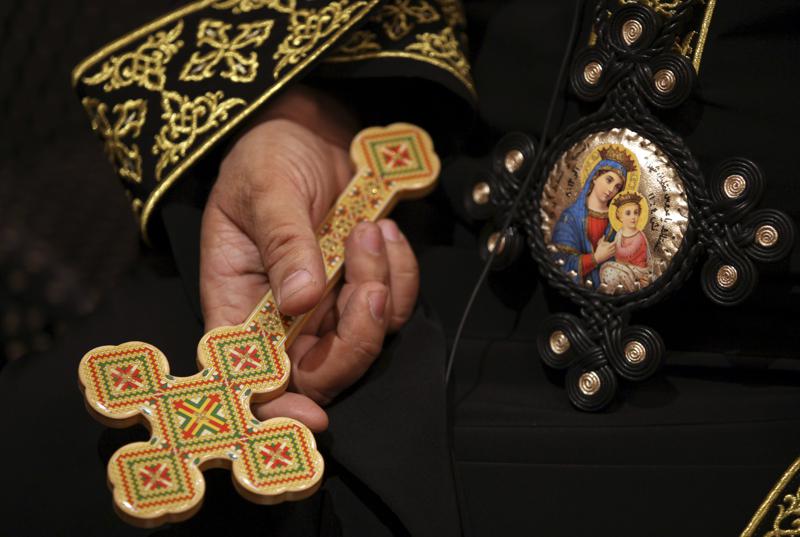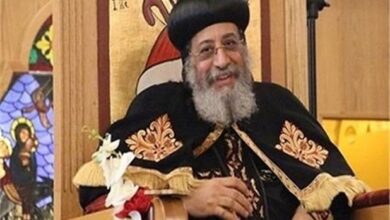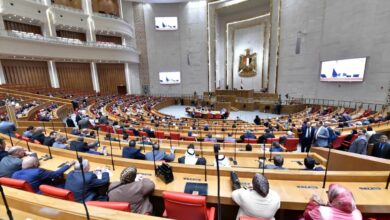Last month American University in Cairo professors heard the defense of a thesis on the representation of Christians in Egyptian cinema, from the early forties until present day.
Dina Samir is the first master’s student at AUC to tackle such an issue. Her research, titled “The portrayal of Copts and the Christian-Muslim relationship in the Egyptian cinema,” is considered timely due to growing tensions in Muslim and Christian relations, most lately the sectarian violence seen in Nagaa Hamadi earlier this year.
Various intellectuals have also noted a spreading of intolerance and increasing fanaticism among both Christians and Muslims in Egypt during the last decades. Gaber Asfour analyzes the issue in an article he wrote for Al-Ahram newspaper, “Cultural Identity and Religion,” in which he argues that in times of general socio-political and economic tension, religious fundamentalism takes hold among both Muslims and Christians, with an increased focus on the religious aspect of identity. For instance, he writes, Islamic fundamentalists tend to limit Egyptian cultural identity to an Islamic religious one. This is despite the fact that Egyptian Christians make up about ten percent of the country’s population of 80 million.
On a parallel note, Samir posits that Egyptian cinema is moving toward a more courageous and real portrayal of contemporary Christian characters, in comparison with the way such characters were depicted from the early forties to the eighties.
This phenomenon is causing a stir within the Christian community in Egypt: a scenario similar to whenever cinema starts addressing any of the untouched issues in Egyptian society.
“Christians are not used to being portrayed up close in Egyptian movies, so when we raise the curtains on their lives, they panic,” explains Magda Moris, a cinema critic. Egyptian society in general doesn’t always take well to new angles of their lives being scrutinized directly and clearly on screen. But cinema should provide a real representation of reality, not an edited version of it, says Moris.
This has led the Coptic Church to adopt an Al-Azhar approach to dealing with the censorship of uncomfortable issues, two years ago creating a committee to review movies before their release and request changes to be made where films touch on controversial issues concerning Christianity.
Samir’s thesis considers the reactions of Egyptian Christians to Egyptian cinema’s most controversial films concerning Christians: Baheb el-Seenima (I love Cinema, 2004) and Wahed Sefr (One Zero, 2009).
I love Cinema narrates the story of an Egyptian family in which a Coptic Christian man is married to a protestant wife. The marriage is not accepted in the orthodox Coptic faith. The film also features a Coptic family with a fanatical father, and a mother less extreme in her religiosity. The film looks more closely than before at the Coptic family as a whole.
The release of the film met with an aggressive boycott campaign by the Coptic community. The Coptic Church released many statements of disapproval, charging that the film “portrays Christians as fanatics, it promotes unrighteous relationships, and presents an extremely negative and crude image of the Coptic family,” Samir tells Al-Masry Al-Youm.
On the other hand, One Zero tackles a controversial issue within the Coptic Christian community: divorce. At the time the movie was released, the issue was still relatively taboo. The Coptic Church prohibits divorce, yet it is allowed by Egyptian courts, and hence some Copts are divorced but unable to remarry.
While some Coptic reactions varied from boycotting the film to giving very negative feedback, critics welcomed One Zero, encouraging the discussion of such issues. “This is an important step in Egyptian cinema,” says Moris, adding that by tackling such issues awareness is raised and the probability of repeating mistakes lessened.
Egyptian cinema during the forties and fifties dealt with the representation of Christians in a lighter way, and Christian characters in famous Egyptian movies like Fatma, Marica and Rachel and Hassan, Morcos wi Kohen were there for humorous purposes, and mainly to highlight diversity in Egypt from a social perspective, not a religious one, says Samir.
After the 1952 national independence, representation of Christians in cinema was minimal, and uncontroversial. “The depiction of Christians was more likely to be vague, with a lack of individuality,” says Samir.
Cinema during Nasser’s time, according to Egyptian director Hany Khalifa, did not focus on representing Christians or their relationship with Muslims, as this was not among the salient issues of the time, with a political environment geared toward Arab nationalism and a national project to unite differences. Rather, cinema during Nasser’s time supported his ideology and the revolution, writes Samir.
And during the eighties and nineties, representation of Christians continued to be dominated by the notion of national unity, while ignoring differences, with just a few exceptions. “Mubarak’s time witnessed increased demands to incorporate images of Christians, stressing a national unity theme that was guarded by censorship,” says Samir. Movies confirming this trend include el-Erhabi (The Terrorist, 1994) by Nader Galal, and Amali Bahnasi’s el-Tahwila (The Switch, 1996).
Samir says there is a trend for Christians to be portrayed as holding a stronger faith, which they practice more religiously, than their counterparts in the sixties and seventies. On the contrary, she says, Christians are human beings, not only good nor bad.
“Representation of Christians needs to be more realistic and touch on more serious problems like Muslim and Christians relations and Christians rights in a Muslim community,” says Samir, concluding her research.




